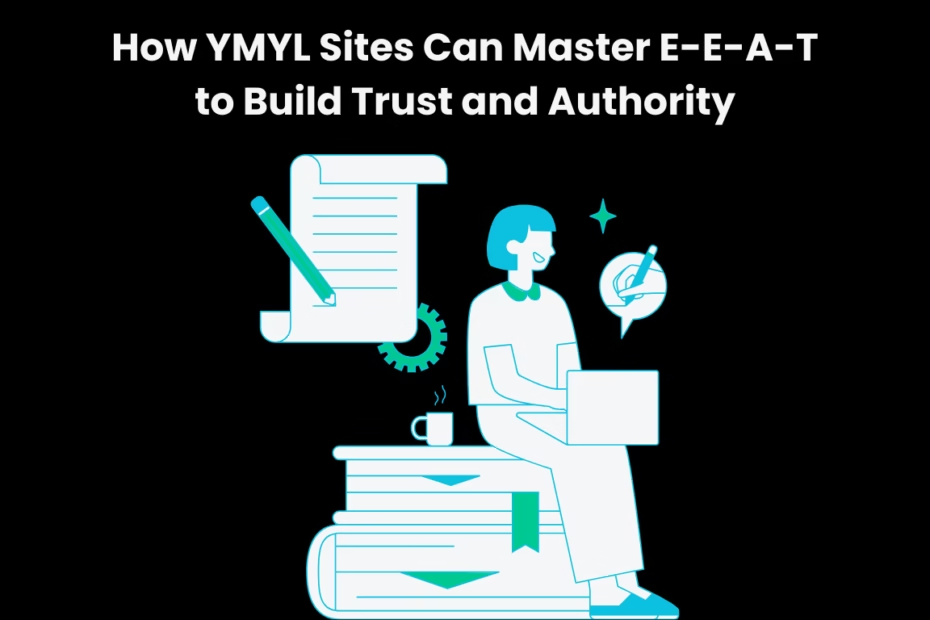As Google continues to raise its standards, “Your Money or Your Life” (YMYL) sites must make trust-building a core content principle. Today’s search engine algorithms are more sophisticated in evaluating content quality, prompting a greater urgency in publishers to adopt the E-E-A-T framework.
E-E-A-T stands for Experience, Expertise, Authoritativeness, and Trustworthiness. Following this framework is critical for YMYL sites focused on finance, health, law, or safety. E-E-A-T is a powerful reminder that rankings also depend on providing safe, reliable information to users.
Take note of the following strategies for your content strategy.
Conduct an E-E-A-T Audit
To implement this content framework as effectively as possible, begin with a complete E-E-A-T audit of your website. For example, the West Coast Trial Lawyers website is an example of a YMYL site. A quick audit reveals such E-E-A-T qualities as:
- Education (Harvard Law School)
- Experience (former prosecutor)
- Cases won (over $1.7 billion worth)
There’s also integrated media showcasing thought leadership on CNN, Fox News, BBC, and other news organizations.
The above qualities clearly demonstrate E-E-A-T content principles, reinforcing credibility at every touchpoint. YMYL sites must back up industry claims with authoritative sources; this ensures technical trustworthiness, actively building brand authority through:
- Consistent updates
- Positive reviews
- Industry involvement
Turn the above examples and points into an E-E-A-T audit checklist for your own YMYL website.
Showcasing Experience and Expertise
The E-E-A-T framework urges YMYL sites to place more attention on the teams behind companies, services, and firms. A one-paragraph “about page” isn’t enough to meet Google’s E-E-A-T standards. Users (and search engines) must know that expert advice is coming from qualified individuals.
Start by optimizing author bios for maximum E-E-A-T impact. Every blog post should have a bio and a headshot at the end of the post. These author bio cards should link to more detailed team member pages, highlighting:
- Experience
- Education (schools and degrees)
- Industry certifications
- Personal commitments to service
For example, a YMYL site about financial planning should have blog posts written by certified financial planners. Author cards can also include LinkedIn social buttons, further optimizing for E-E-A-T. Remember, Author Schema helps search engines “connect the dots” to index credibility directly.
Integrate credentials into the web design so that professional certifications and memberships to industry organizations appear on every page, preferably in the footer.
Demonstrated experience is a powerful E-E-A-T signal. Publish real-world case studies that include results and citations. Clinical trials and informational video content from trusted institutions also demonstrate experience.
Mastering Authoritative Content Creation
The E-E-A-T framework pushes the use of subject matter experts, meaning YMYL content should be written (or reviewed) by proven subject matter experts. This requirement ensures information is correct, relevant, and up to date. Content should be regularly reviewed and updated.
Topic clusters also demonstrate niche-specific expertise. For example, if you own a financial site, create a content hub around “retirement planning,” featuring articles on 401(k)s, IRAs, and Social Security. This structure signals to search engines that your site is a go-to resource for that entire subject.
Beyond accuracy, YMYL content must be comprehensive and helpful. Blogs, articles, and guides must:
- Be thorough
- Address common questions
- Provide multiple perspectives where appropriate
The concept of content “authority” is defined as a recognized and respected voice within an industry. Content must be high-quality but also externally validated by other thought leaders in the sector.
YMYL content must cite reputable sources for the following:
- Claims
- Statistics
- Medical or legal advice
When citing in text, link to authoritative external resources, including:
- Government websites (e.g., CDC, FDA)
- Academic studies
- Well-respected professional organizations
Hyperlinked citations validate claims and allow users to conduct their own research, further building trust.
E-E-A-T Link Building
Authoritative external backlinks are a powerful E-E-A-T signal. Content written by subject matter experts earns backlinks from other reputable sites. Trusted backlinks act as a vote of confidence, telling search engines that your site is a valuable resource.
Establish Trustworthiness
Trustworthiness is an E-E-A-T standard that proves (to search engines) that your technical site is safe, transparent, and reliable.
Technical trust signals include:
- Intuitive user experience (UX)
- Using HTTPS
- Fast and mobile-friendly design
- No technical errors
YMYL sites require accessible NAP navigation: name, address, and phone number; you can include this information on an optimized contact page or web design footer. Privacy policies, terms of service, and disclaimers are also essential to compliance. You can further optimize technical E-E-A-T signals through user-generated content (UGC) like Google reviews.
Read More: Boosting ROI Through Smart Paid Search Marketing: The Ultimate Guide
Implement the Latest E-E-A-T Standards
Remember to monitor your YMYL site’s performance and update content to maintain strong search signals. Think of any off-site strategies that could improve E-E-A-T signals, like speaking at industry conferences that earn citations, video content, and web traffic. Continue to audit your brand for authority, uncovering even more opportunities to build trust.

